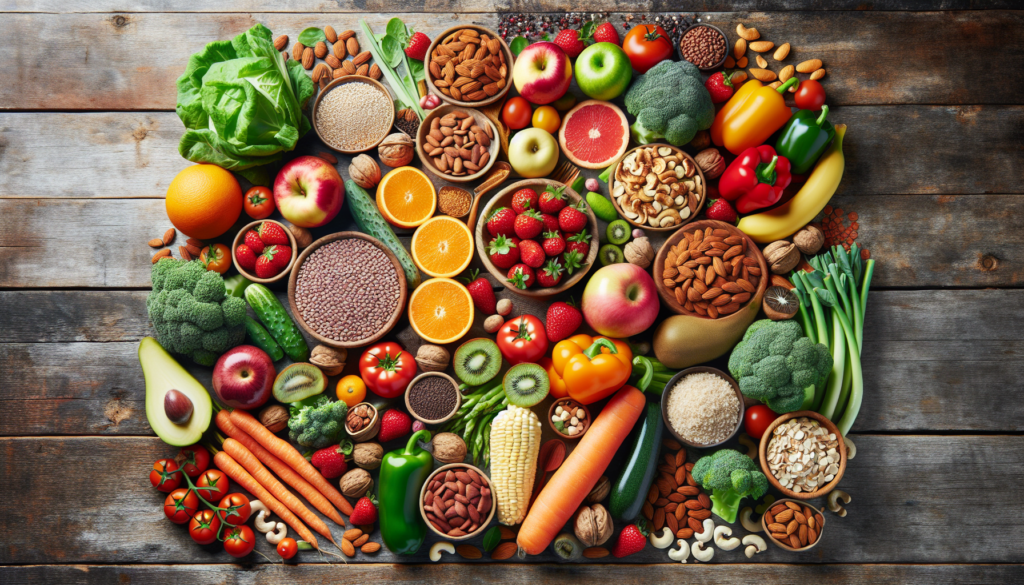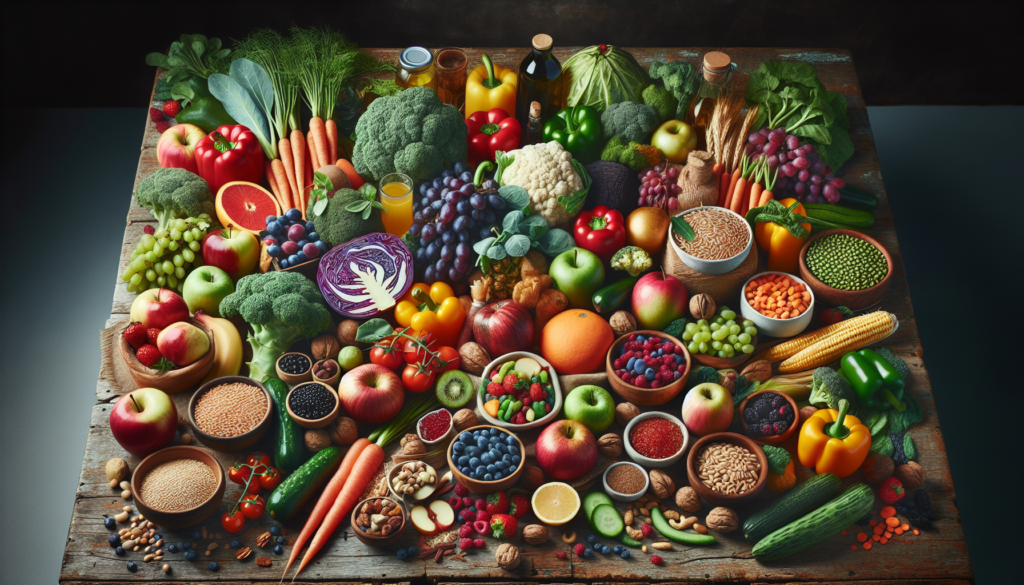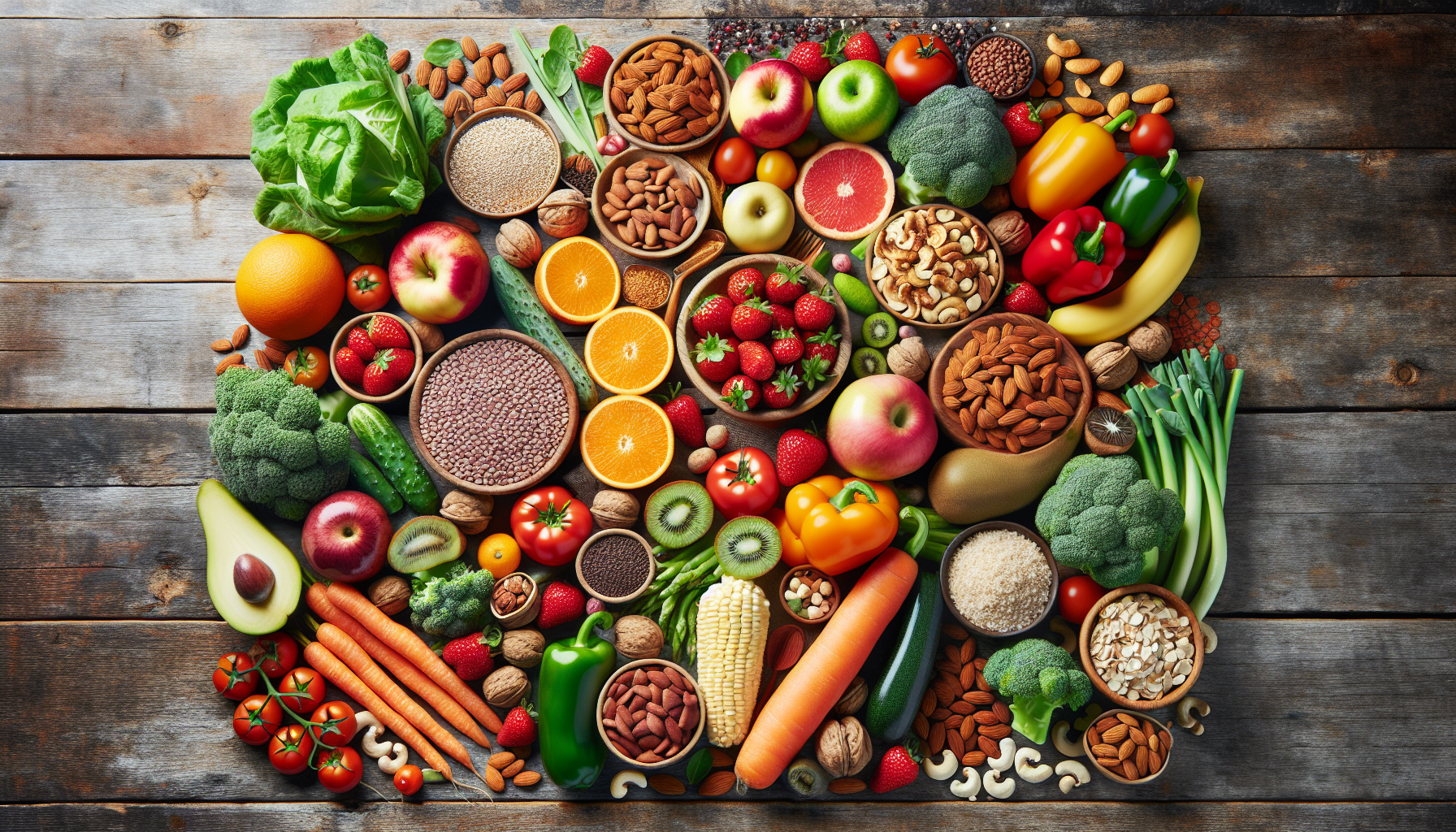Have you ever stared into your refrigerator, bewildered, like an actor in a noir film, wondering if your vegetables are conspiring against you to create the perfect balanced plant-based meal plan? You, my friend, are not alone. It’s a bit like a scene from a classic whodunit: Was it the quinoa in the salad bowl or the kale with the walnut dressing in the dining room? But fret not, for this article is your very own detective guide filled with plant-based clues—minus the trench coat and magnifying glass.

Understanding the Basics of Plant-Based Diets
Let’s kick things off with a foundational understanding of what a plant-based diet entails. And no, it doesn’t mean munching iceberg lettuce until you morph into Bugs Bunny.
What Exactly is a Plant-Based Diet?
In the simplest terms, a plant-based diet emphasizes foods derived primarily from plants. This includes not only fruits and vegetables but also nuts, seeds, oils, grains, and beans. They’re all invited to this garden party. It’s less about the exclusion of animal products and more about making plant foods the centerpiece of your meals.
Why Opt for a Plant-Based Diet?
Aside from the smug satisfaction of telling your friends you’re now a “plant-based warrior,” this diet has several benefits. It’s akin to discovering a new level on a video game, where you unlock health bonuses, environmental kudos, and a variety of culinary tastes. From reducing the risk of chronic diseases to being kinder to the planet, the benefits are plentiful. The only downside is perhaps wondering if avocados feel pressure about their role as poster child.
The Building Blocks of a Plant-Based Meal
Creating a balanced plant-based meal is a bit like assembling a Swedish flatpack but thankfully with fewer Allen wrenches. Here’s how you can structure your meals without feeling as though you’re orchestrating an over-ambitious culinary symphony.
The Macros You’ll Need
Your meals should ideally have a comforting mix of three main macronutrients: carbohydrates, proteins, and fats. It’s a little trio that makes your meal both satisfying and nutritious.
Carbohydrates: The Energetic Dynamo
Carbs are basically the extroverts of the food world—they’re everywhere and give you energy. Focus on complex carbohydrates such as whole grains, legumes, and starchy vegetables. Remember, it’s not about banning carbs like a bad 90s diet commercial but embracing the right kind.
Proteins: The Building Blocks of Musk and Might
Ensure your body resembles more of Thor pre-Endgame by including proteins derived from plants. Think beans, lentils, tofu, tempeh, and my personal favorite, chickpeas—because let’s be honest, who doesn’t love a good hummus debate?
Fats: The Misunderstood Friend
Fats are not your enemy—they’re like that misunderstood rebel in every teen movie. Incorporate healthy fats from avocados, nuts, and seeds. They’re good for you and won’t make you feel like you’re about to join a yoghurt commercial bouncing through fields.
Planning Your Plate with Plant Power
Imagine your plate as if it’s hosting a dinner party and you, the host, must invite a stellar guest list. Balance is key; you want a variety of nutrients, flavors, and textures gracing your fine china.
Fruits and Vegetables: The Colorful Showstoppers
Aim to fill half your plate with fruits and vegetables. The more colorful, the better. It’s like inviting that eccentric friend who lights up the room—don’t be afraid of purple carrots or heirloom tomatoes!
Whole Grains: The Wholesome Anchors
Ensure about a quarter of your plate is filled with whole grains. Quinoa, brown rice, and whole wheat pasta are all excellent choices, second only to your mom in her “why aren’t you eating more?” form.
Proteins: The Strong, Silent Types
These should take up the final quarter of your plate. Remember, it’s a chance to get creative—rotate your sources weekly, so you don’t end up in a Groundhog Day situation with lentils.
Spice Things Up: Flavor as an Essential Element
Bland meals are like romcoms without a twist—predictable and uninspired. Flavor not only makes food taste better but also brings with it a variety of health benefits.
Herbs and Spices: The World Beyond Salt
Think of spices as flirtatious winks from across a crowded room. They’re bold, grab your attention, and know their worth. Experiment with herbs like basil and dill, and spices such as cumin and turmeric. Remember to ask yourself: What would an herb-infused detective do?
Sauces and Condiments: The Accessory to the Dish
In the culinary world, sauces are your little black dress—they bring everything together with minimal effort. Think tahini dressing, cashew cream, or a sassy salsa. Don’t shy away from them unless you are, in fact, shy.

Navigating Food Allergies and Personal Preferences
If you’re anything like me, making decisions about food can make you question your life’s choices. Add in food allergies and preferences, and it’s like playing Minesweeper on hard mode.
Becoming the Sherlock Holmes of Ingredient Labels
Understanding ingredients might make you feel like you’re deciphering hieroglyphics, but it’s essential. Look for hidden allergens and non-vegan culprits lurking in the ingredients list. You wouldn’t want to mistake “casein” for some artsy, artisanal compound.
Substituting Ingredients: A Culinary Magic Act
If there’s an ingredient you can’t have, fear not—there’s bound to be a plant-based alternative. Swap out dairy milk for almond or oat milk. Replace the egg in grandma’s famous cookies with a flaxseed mixture (just don’t tell grandma).
The Art of Meal Prepping: Saving Time, One Kale Leaf at a Time
Meal planning and meal prepping are like the Ross and Rachel of the plant-based world—they belong together, and their absence is palpable.
Planning Ahead: Not Just for Scout Meetings
Dedicate some time each week to plan your meals. It helps organize grocery shopping and ensures there’s no aimless wandering down aisles reminiscent of ‘Lost’-kind of confusion.
Cook & Store: AKA, the Tupperware Tango
Prepare meals in batches and store them in containers for easy access. It’s a dance that saves time, reduces food waste, and gives you refrigerator bragging rights.
Sample Weekly Meal Plan
Here’s an example to help gearshift into meal prep with ease:
| Day | Breakfast | Lunch | Dinner | Snacks |
|---|---|---|---|---|
| Monday | Overnight oats with berries | Quinoa salad with veggies | Veggie stir-fry with tofu | Almonds and an apple |
| Tuesday | Smoothie bowl | Lentil soup with whole grain bread | Zucchini noodles with pesto | Hummus and carrots |
| Wednesday | Chia pudding | Chickpea sandwich wrap | Sweet potato curry and rice | Mixed nuts and fruit |
| Thursday | Avocado toast | Mixed bean salad | Cauliflower tacos | Dark chocolate and fruit |
| Friday | Pancakes with fruit | Stuffed bell peppers | Eggplant lasagna | Rice cakes and nut butter |
| Saturday | Whole grain cereal with almond milk | Black bean burger | Thai-style vegetable stir-fry | Edamame and fruit |
| Sunday | Banana oatmeal | Spinach and strawberry salad | Vegetable soup | Trail mix |
Staying Inspired and Avoiding Meal Monotony
Just like repeating the same Netflix series, too much of the same thing can become tedious. Here’s how to keep things fresh and exciting, sans cognitive whiplash.
Varying Cuisines: A Global Culinary Odyssey
Spice things up by involving cuisines from around the world. One day it’s Italian flair with pasta, the next it’s Mexican style with black bean tacos resulting in a culinary passport with zero jet lag.
Community and Cooking Classes: More Fun Than a Cooking Show Meltdown
Join groups or take classes, whether online or in person, to introduce variety. It’s the perfect opportunity to unleash your inner Gordon Ramsay without the creative insults.
The Marvelous Benefits of Eating Plant-Based
It would be remiss to wrap up this leafy saga without touching on how this lifestyle perks up everything from your waistline to your peace of mind.
Health Pros Worth Bragging About
Lower risks of heart disease, weight management, and glorious skin that could give avocados a run for their money. Becoming plant-based doesn’t just change your plate—it could change your life.
Environmental Bounty: Green is the New Black
Adopting a plant-based diet is like being a member of the best secret society ever—helping the environment without needing a secret handshake.
Conclusion: The Plant-Based Journey
You’ve got the tools, the enthusiasm, and probably some newfound green thumb tendencies. It’s time to create balanced, plant-based meal plans that impress not only your taste buds but also your conscience. In this dietary detective saga, fortune favors the prepared—with or without a side of moral superiority, but preferably with a good dipping sauce.
So, next time you eye the fridge as if it’s harboring culinary fugitives, don’t be daunted. Plan, prepare, and embrace the plant-world. Your body and maybe even that cauliflower will thank you.
